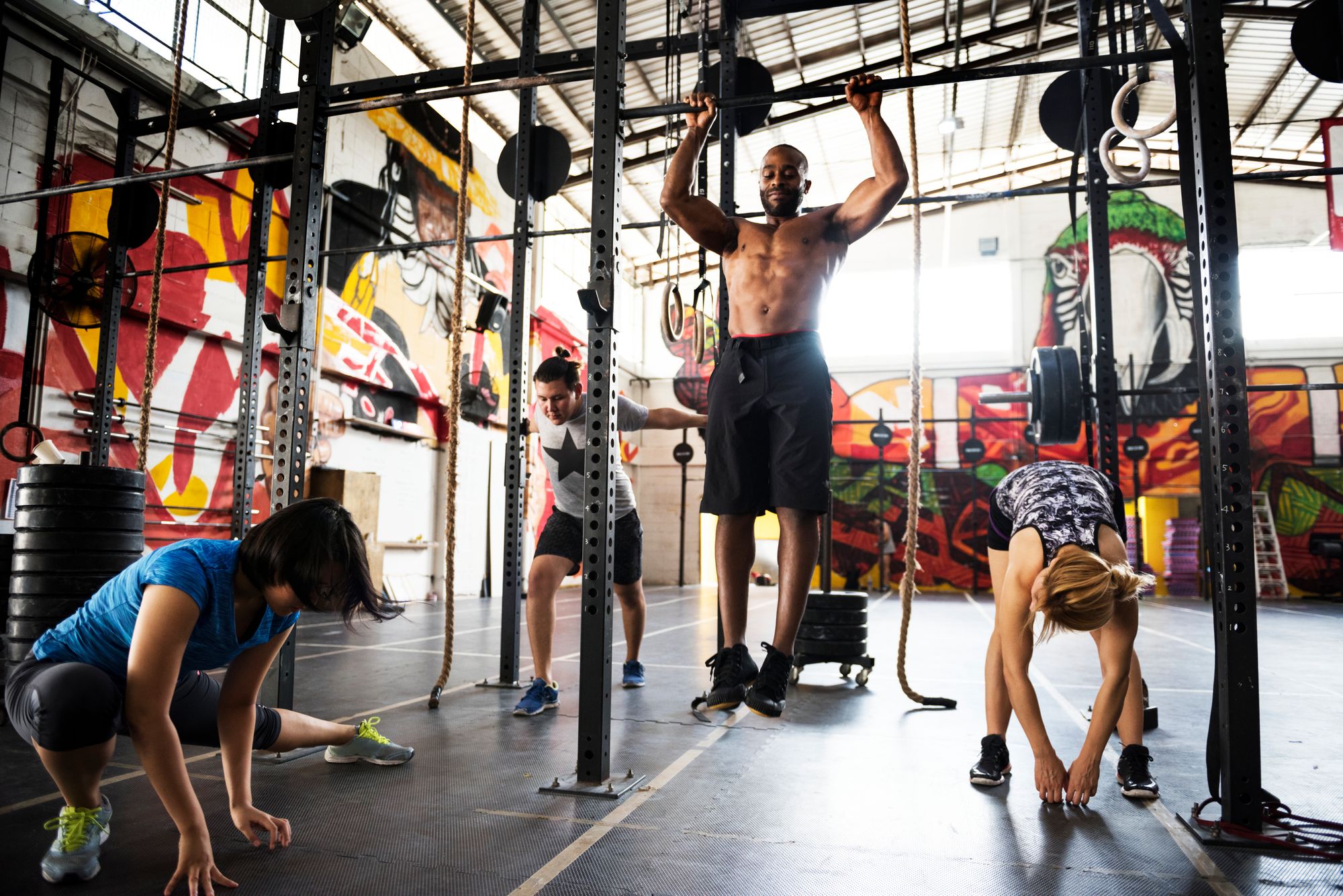Beat “Gymtimidation”. Here’s How.
Dread or fear going to the gym because you feel judged? That's a common phenomenon known as "gymtimidation"; find out how to overcome that here.

“Gymtimidation” often prevents people from achieving their fitness goals ?
And given that many of us have recently set New Year’s resolutions to start hitting the gym for a healthier, fitter body … there’s arguably no better opportunity to talk about this strange, crippling phenomenon than now.
So, this article dives into everything you need to know about “gymtimidation” – what it is, who it affects, and, most importantly, how you can (finally) overcome it to crush your fitness goals. Let’s get started.
What is “gymtimidation”?
“Gymtimidation” is pretty much what it looks like.
It’s a combination of "gym" and "intimidation". It's a relatively new term used to describe the feelings of fear, dread, and, well, intimidation someone associates with heading to the gym.
You may have felt it before.
That nagging feeling you have that someone is laughing at you as you fumble with the safety bars on the squat rack? Or the desperation you feel when you can’t figure out how to adjust the damned settings on the leg press machine? Yep – those are common feelings associated with “gymtimidation”.
Unfortunately, these heightened levels of fear and apprehension could be enough to put someone off going to the gym entirely. And maybe … you’re one of them.
If you feel attacked, don’t take this personally.
The truth is that “gymtimidation” isn’t something to be embarrassed about because many people struggle with it, too.
Consider this: according to research commissioned by Samsung, almost a third of Brits have found the traditional gym set up so intimidating that they have canceled their membership altogether! That's obviously bad news for their resolutions.
So, if you're hoping to up your chances of gaining muscle, losing fat, or simply becoming physically fitter, understanding how you could beat "gymtimidation" is a wise idea.
How to beat gymtimidation
1: Have a “plan of attack”
First up: much like how pre-planning your vacation sight-seeing schedule keeps anxiety at bay, having a planned workout program ready on hand could help reduce “gymtimidation”.
Instead of constantly worrying about the exercise you should do next (e.g., "Should I do the hip thrusts or the barbell squats next?"), even during your sets, you can fully focus on that desired mind-muscle connection for optimal growth because you know what's coming next.
Oh, and there’s another advantage to planning out your programs in advance, too.
Because you’ll be looking at your workouts with a clear mind, you’re more likely to identify if you’re allocating the right volume and exercise variation to your target muscle groups.
And what does smarter workout programming translate into? That’s right. Better gains.
One final tip on workout programming if you deal with “gymtimidation”: try to cluster exercises done in a specific spot together to reduce your movement in the gym.
What does that mean?
So, let’s say it’s “upper body day” – and your workout plan includes barbell bench press, incline dumbbell chest press, dumbbell lateral raises, cable bicep curls, seated cable rows, and chest supported dumbbell rows.
One way you could program it would be:
- Barbell bench press (Barbell)
- Dumbbell chest press (Dumbbells + Bench)
- Chest supported dumbbell rows (Dumbbells + Bench)
- Dumbbell lateral raises (Dumbbells + Bench)
- Seated cable rows (Cable machine)
- Cable bicep curls (Cable machine)
See how this sequence minimizes your movement in the gym?
2: Understand (and practice) proper form
One of the primary components of “gymtimidation” is undoubtedly the fear of butchering exercise execution, especially on complex movements like the deadlifts, overhead presses, and squats.
And that’s where understanding (and practicing) proper form comes in.
Thankfully, there are plenty of ways you could do that. The first is to turn toward quality fitness resources – ahem, like GymStreak’s – and read up on everything you can about proper exercise execution.
Next, you’ll have to practice. Note: you don’t even have to step into the gym to practice.
You can break many common exercises into small movements that can be easily replicated at home. Take the deadlift, for instance.
Its primary movement mechanic is the hip hinge, where you predominantly flex and extend your hips to lift the weights. You can practice this "driving back" motion even with a broomstick. Ultimately, the same principles apply: maintain a neutral back, brace your core, and practice good lifting breathing techniques.
Trust me: all this practice will transfer to all the lifting you do on the actual gym floor – and you won’t be afraid of what others are thinking about your form anymore (because you know you’re doing it right!)
3: Familiarize yourself with the machines
Let's be honest.
Gym machines have way too many knobs and levers on them. On the one hand, it’s a good thing because it allows you to adjust the settings until you’re best able to activate your target muscle group … but on the other, it’s also THE cause of your gym anxiety. (“Argh, I’ve been struggling with this for 15 minutes!”)
Guess what? There’s help readily available in the form of friendly gym staff.
The next time you spot one hanging around, approach them – and ask them to walk you through your favorite machines (or maybe even all of them) to show you, precisely, how you could adjust their settings. Note it all down if you have to.
4: Focus on your workout
You’re in the gym working on yourself, for yourself. Be proud of that! Focus on crushing your own workout goals and try not to fixate on what you think other people may be thinking of you (and what you’re doing).
That said, if you do need just a tad more guidance to get over “gymtimidation”, GymStreak could help with its:
- Motion-captured exercise demonstrations: An extensive exercise library lets you view various exercises' exact (correct) form and timing.
- Access to tons of quality fitness resources: Look at our past articles (e.g., How To Get Bigger Biceps; How to Minimize Cardio and Strength Training Interference; and Which Recovery Techniques Should You Use for Sore Muscles?) on the GymStreak blog!
- Tailored workout plans: Don't want to do the programming yourself? GymStreak’s got you. All you need to do is input your statistics and fitness goals, and we’ll do the rest.
References
8 in 10 Brits Admit to ‘Gym-timidation’ Post-Lockdown. (n.d.). Retrieved January 12, 2022, from https://news.samsung.com/uk/8-in-10-brits-admit-to-gym-timidation-post-lockdown

